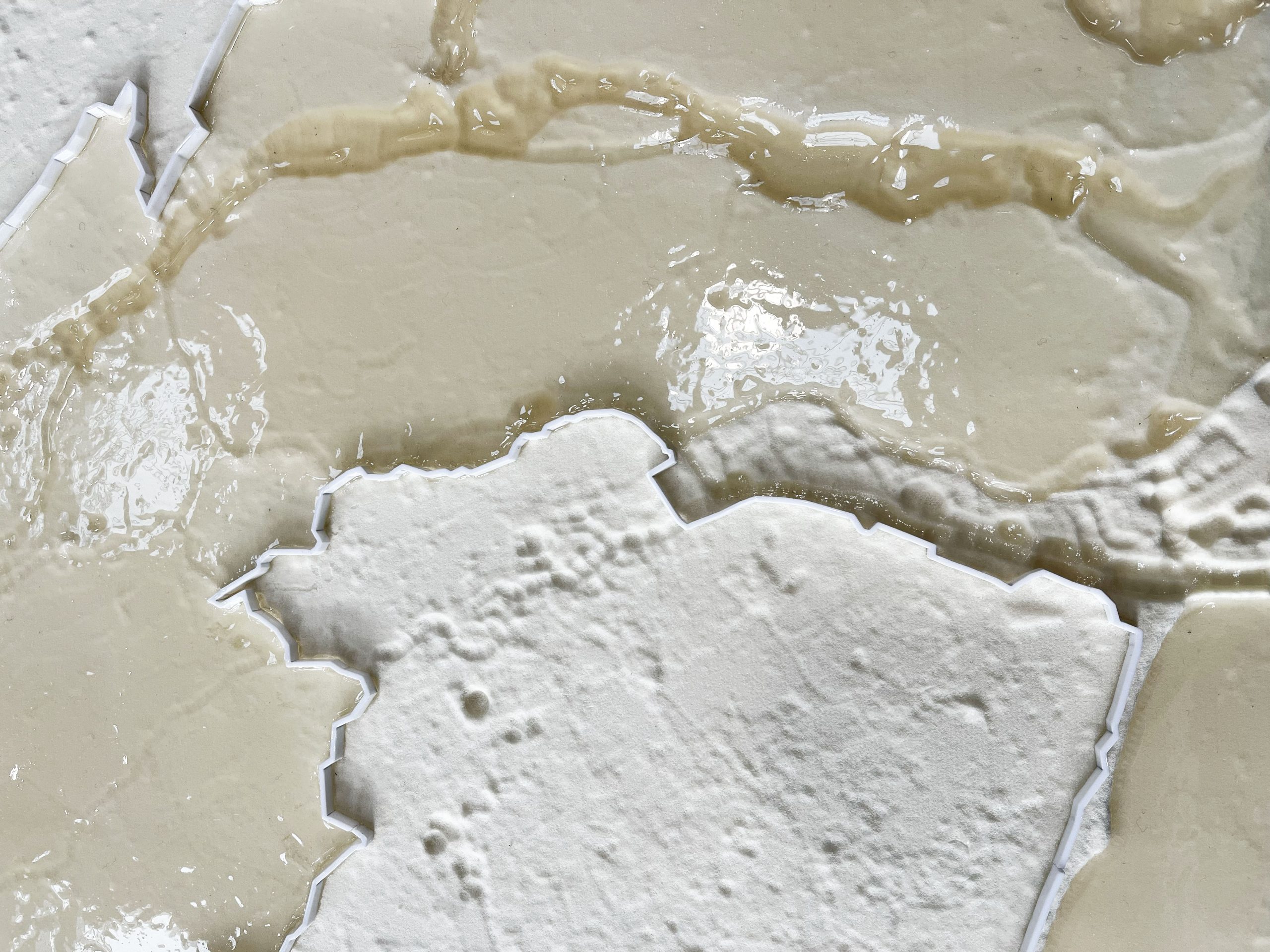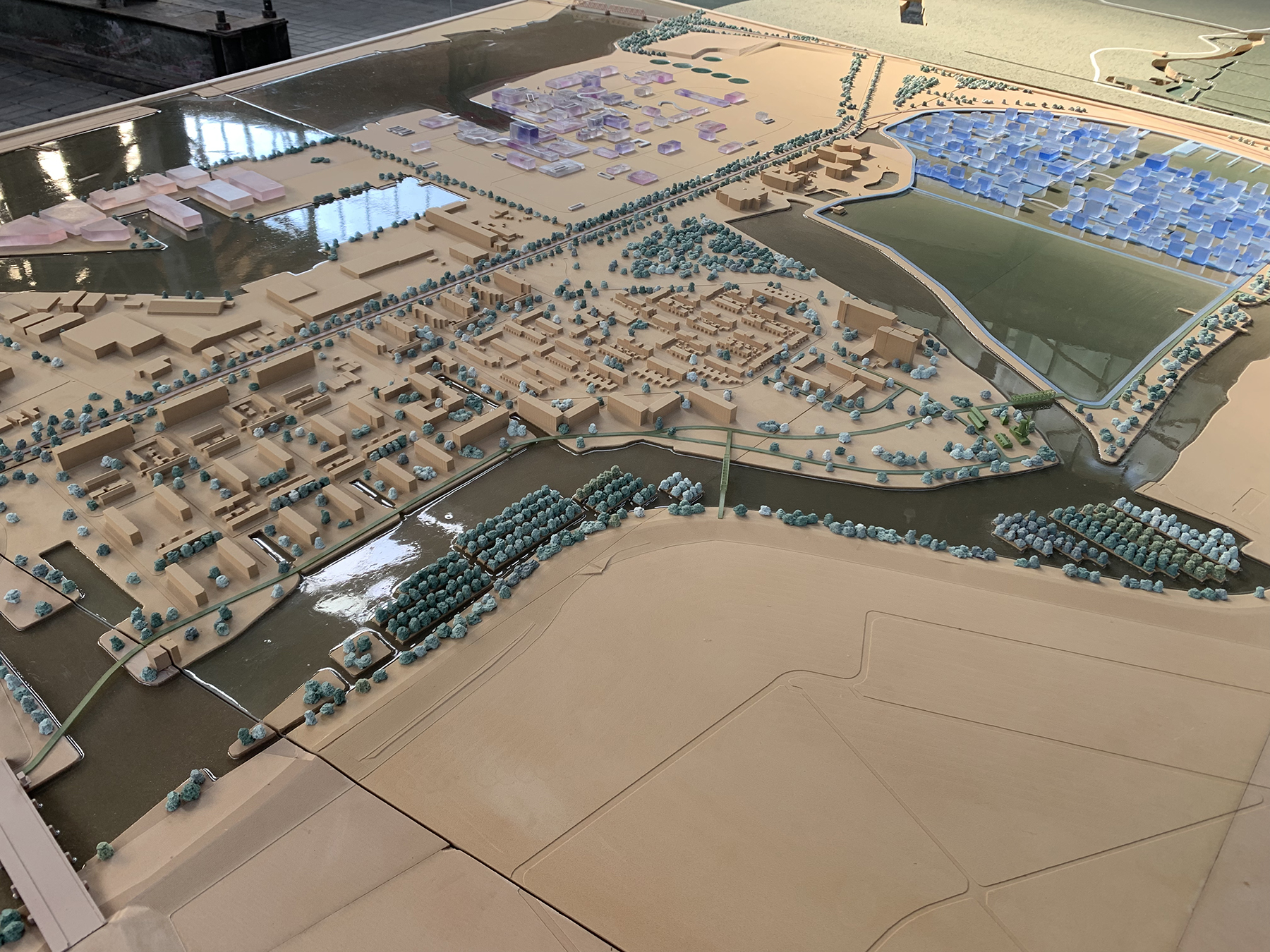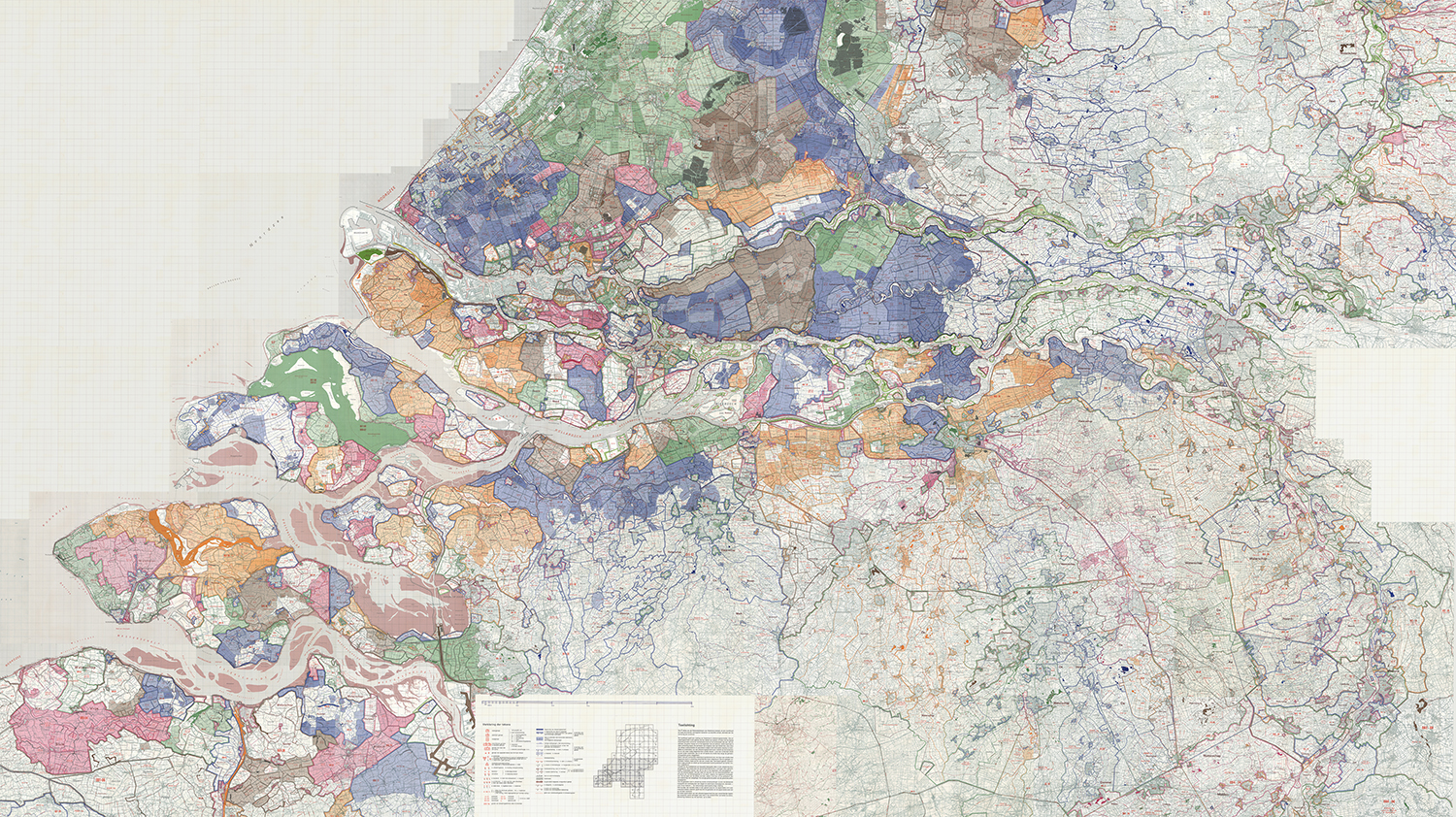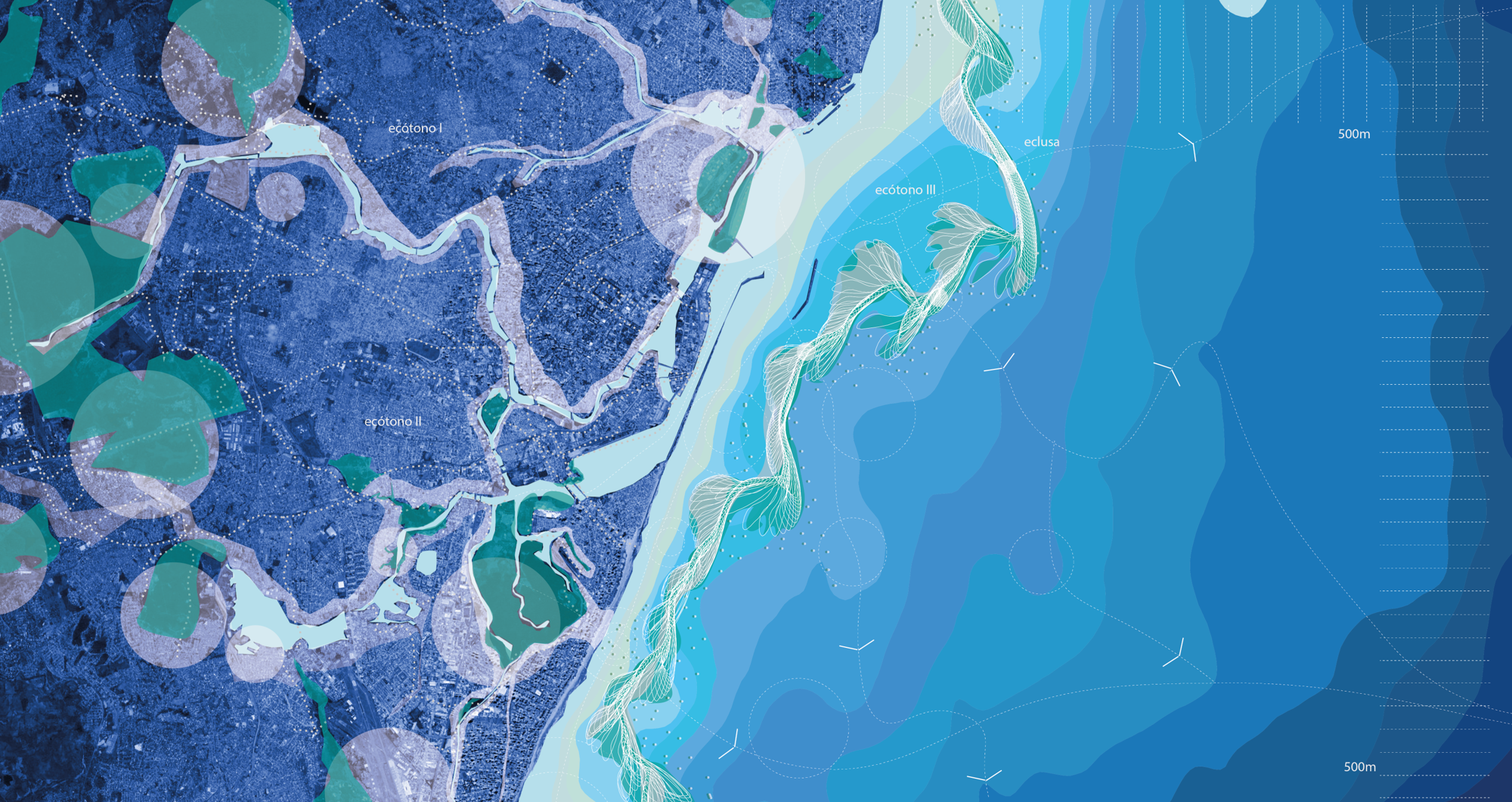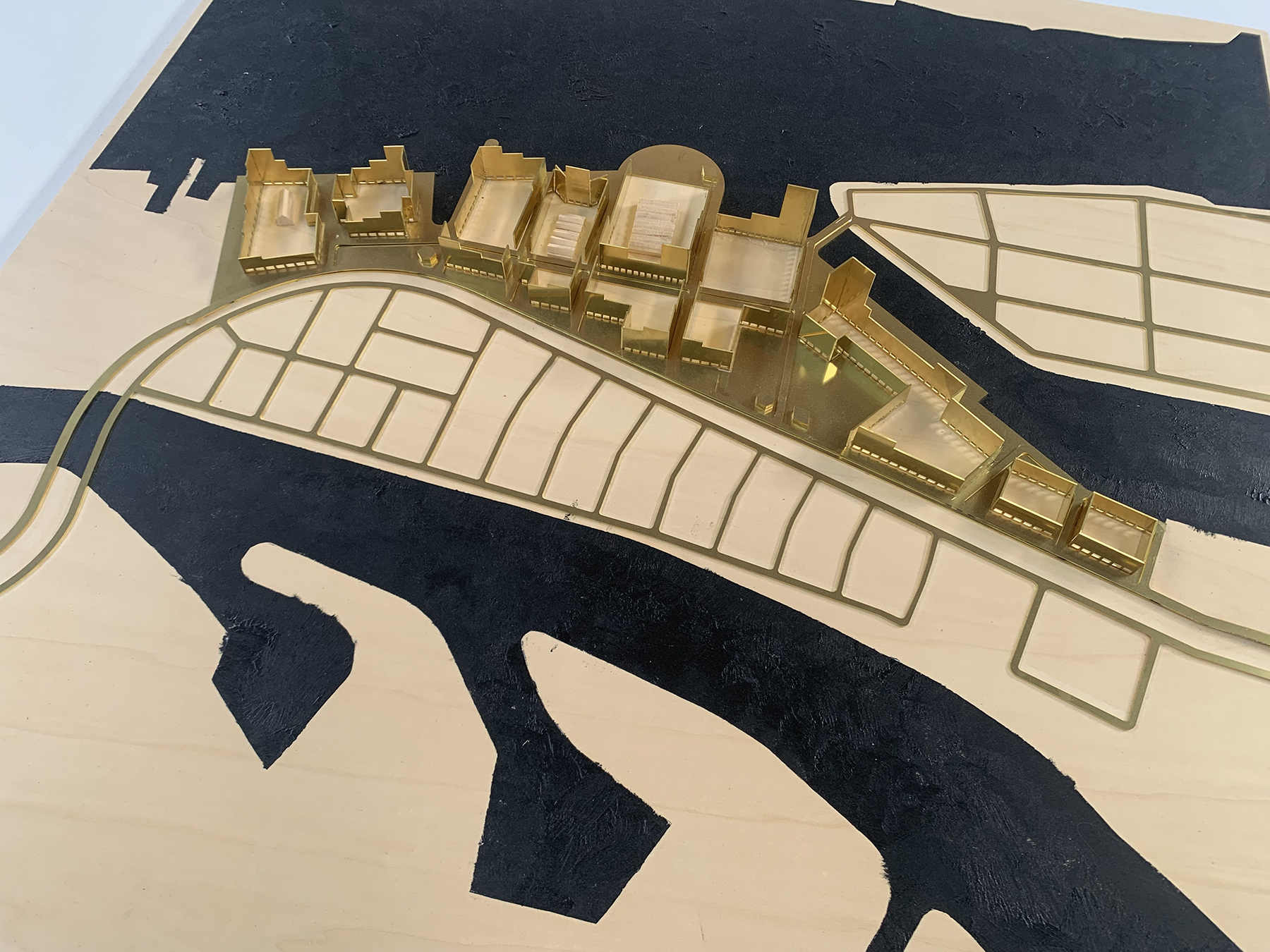
De Staart, West 8: IABR–Atelier Dordrecht
The case of De Staart in Dordrecht is used withing RDD as example how – through – design floodrisk management and urban development can be brought together.
De Staart is located outside the dikes but due to its industrial function it was raised relatively high. It is besides an industrial area also residential, which is partly on a former poison belt. This creates an ambivalent living environment. On the one hand, it is a district with lots of nature and beautiful areas close by: the Biesbosch and the historic city center. On the other hand, there is the proximity of the industrial area, including a waste incineration (which supplies heat), a WWTP, a chemical factory and a penitentiary. After the poison land affairs, an environmental scandal around Chemours, the district is now affected by the departure of facilities. This is due to a smaller range of shops, lower frequency of public transport and the departure of the general practice, which is also at the expense of meeting places and the liveliness in the neighborhood. There are also no sports grounds on De Staart. As a result, the quality of life in the neighborhood continues to deteriorate, which makes residents feel mistaken. Interviews with residents in the AD of 2018 show the sentiment that hangs around the neighborhood. This (negative) sentiment has in turn led to the fact that the development of house prices over the past few years has lagged far behind other districts. All these factors together mean that the spatial development of De Staart is currently locked down.
In response to the decline in quality of life, social organizations, entrepreneurs and residents started the initiative 'De Staart is worth it' in 2018 to build a good name for De Staart. But a good name alone is not enough to address the structural problems of the district. That is why the municipality of Dordrecht approached the International Architecture Biennale Rotterdam (IABR) a few years ago to solve the problems of De Staart as support ‘De Staart is worth it’.
The IABR is a cultural and knowledge institution with the aim of using the power of imagination and design for real change. The IABR does this (among other things) by bringing together important disciplines and sectors to conduct result-oriented design research into the city of tomorrow. To this end, the IABR and the municipality jointly set up the IABR–Atelier Dordrecht in June 2019 . This is a temporary free space, open environment and work trajectory in which it is possible to look at one's own task from a new perspective, to tap into new solutions and to work on concrete design proposals. For this Atelier, the perspective 'Water (safety) as leverage' has been put forward.
By looking at the area from this perspective, a new perception of De Staart gradually emerged, namely: as a safe place to evacuate in the event of an imminent flood and as an attractive location where sustainable area development can provide an optimal solution for (part of) the construction task.
Dordrecht is preparing for future floods with a strategy based on the concept of multi-layer safety (dikes (layer 1), spatial measures (layer 2) and crisis management (layer 3)). The authors are: municipality of Dordrecht, water board Hollandse Delta, Provincie Zuid-Holland, Veiligheidsregio Zuid-Holland Zuid and the Ministry of Infrastructure and Water Management. This strategy led to a Water Safety Plan. In the exceptional scenario that the city threatens to flood, the current advice in this plan is to flee to the attic. Research commissioned by the project 'Water and Evacuation' shows that fleeing to the attic leads to a large and complex rescue task.
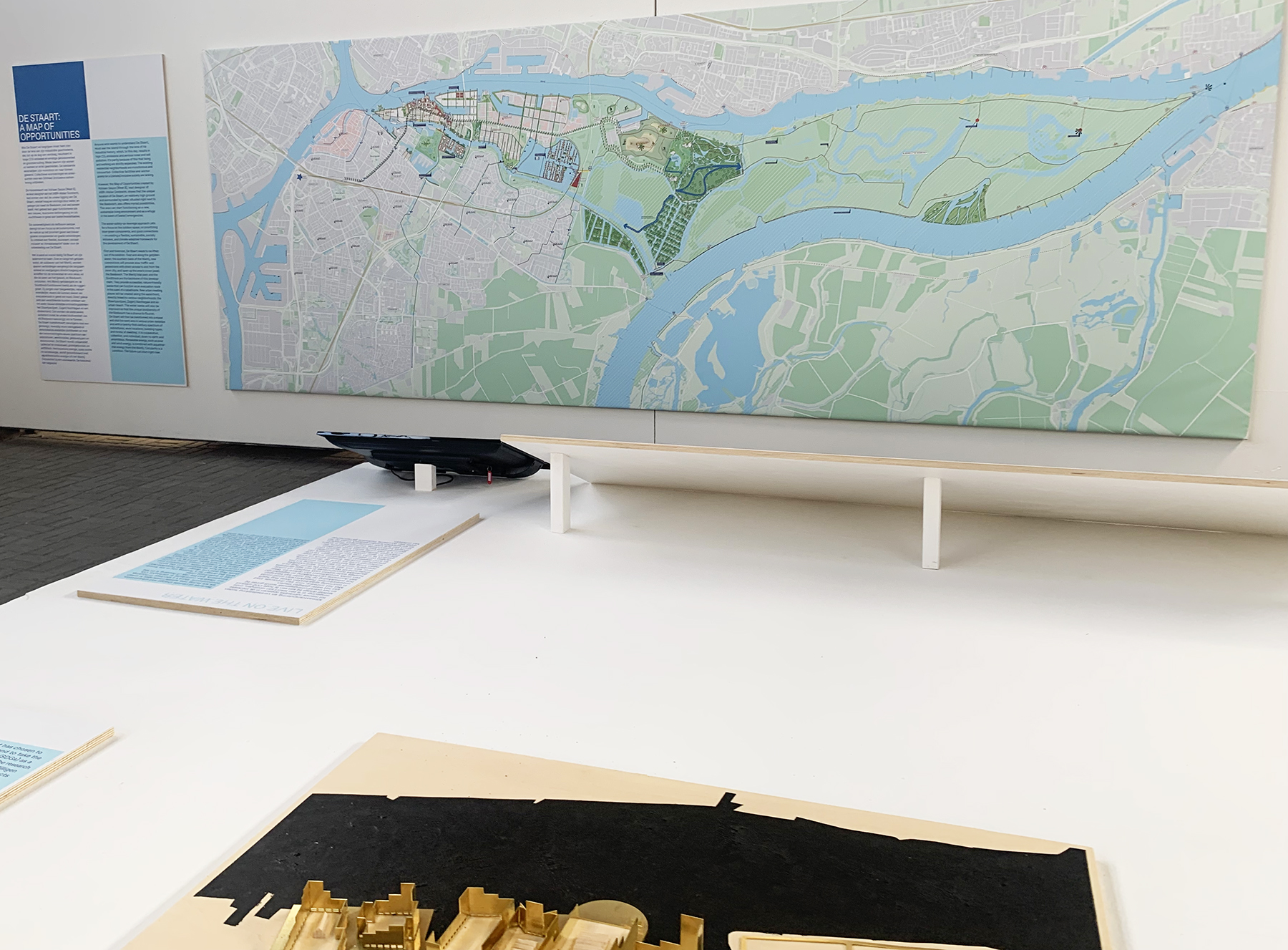
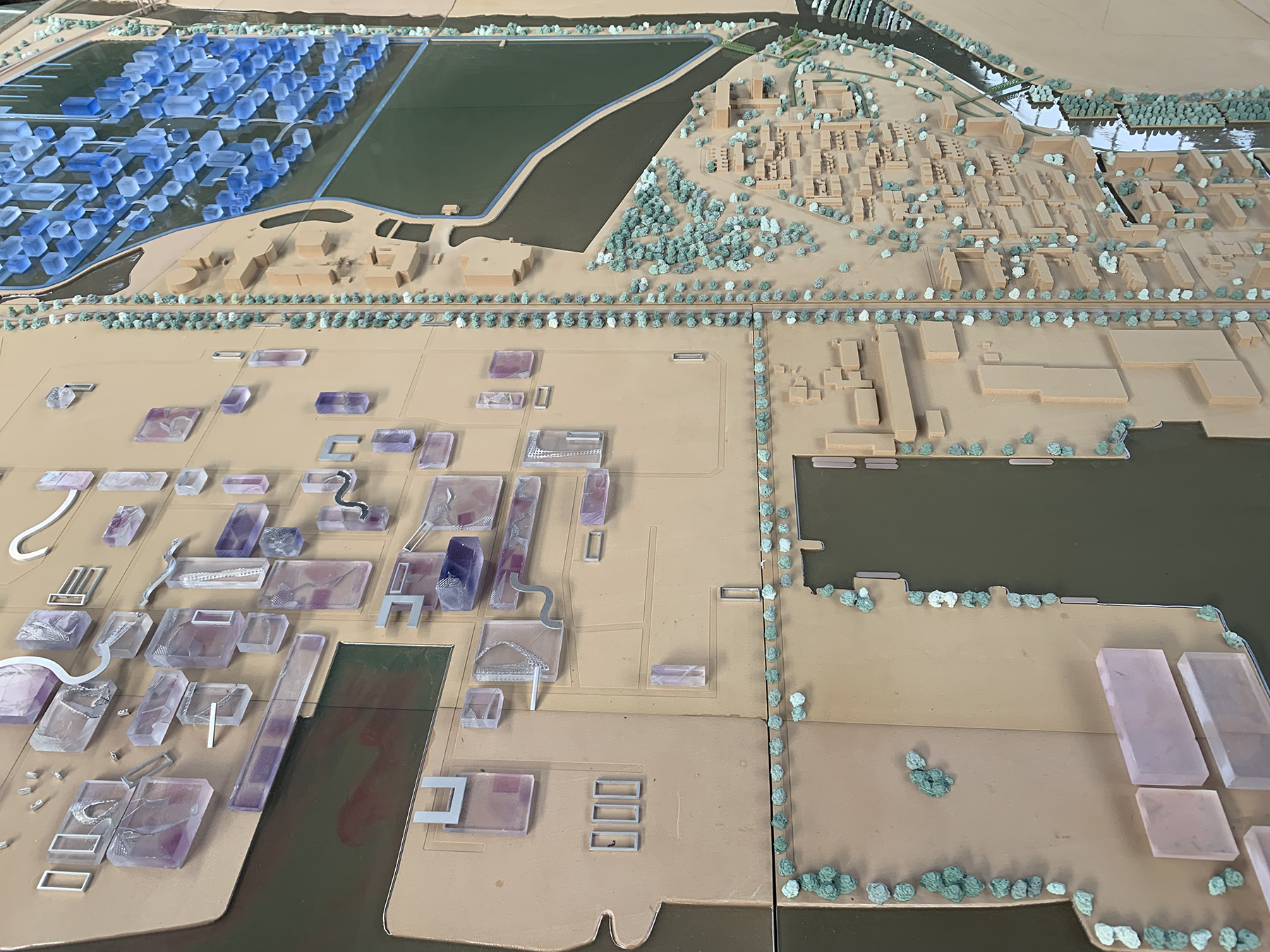
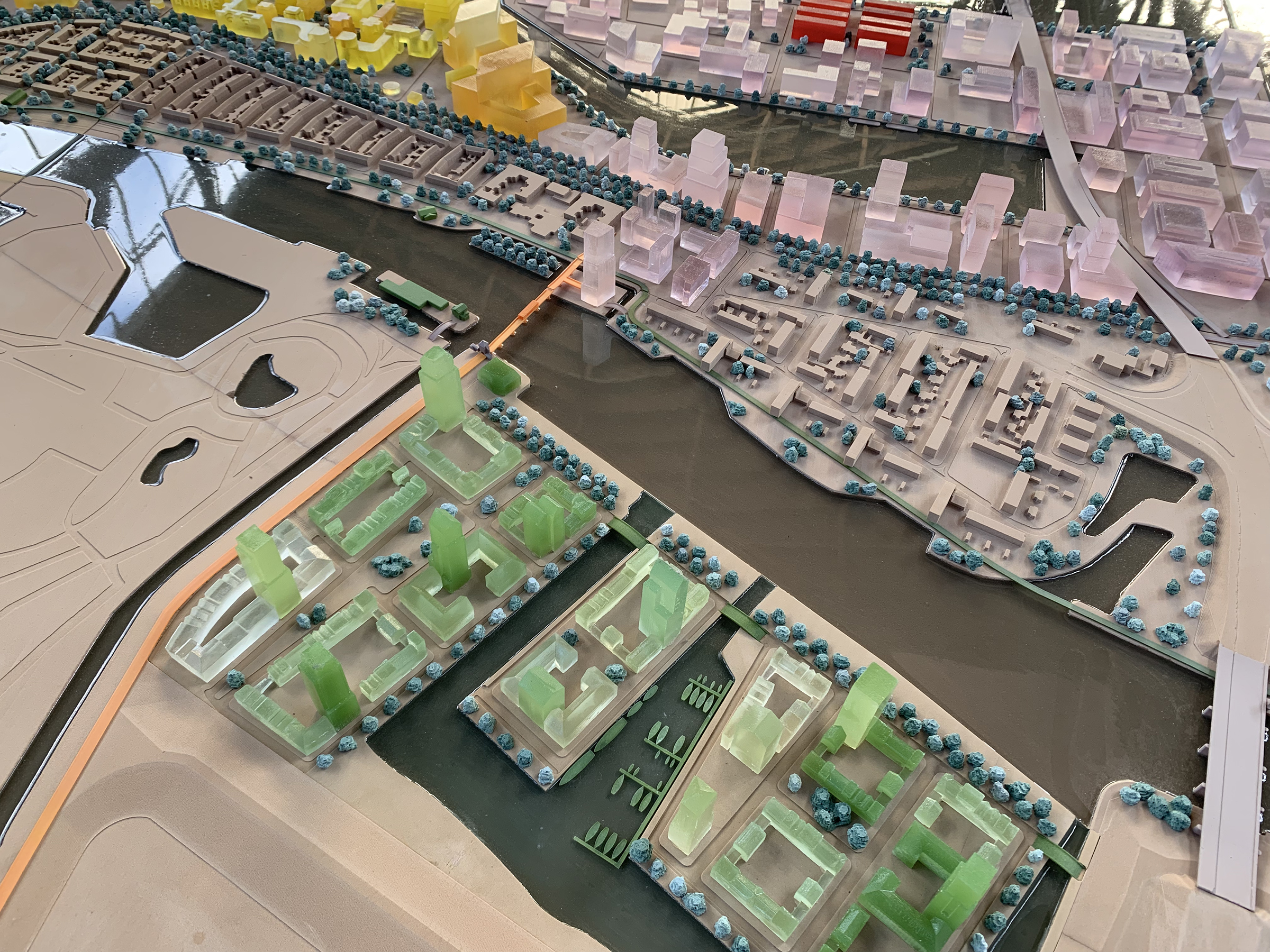
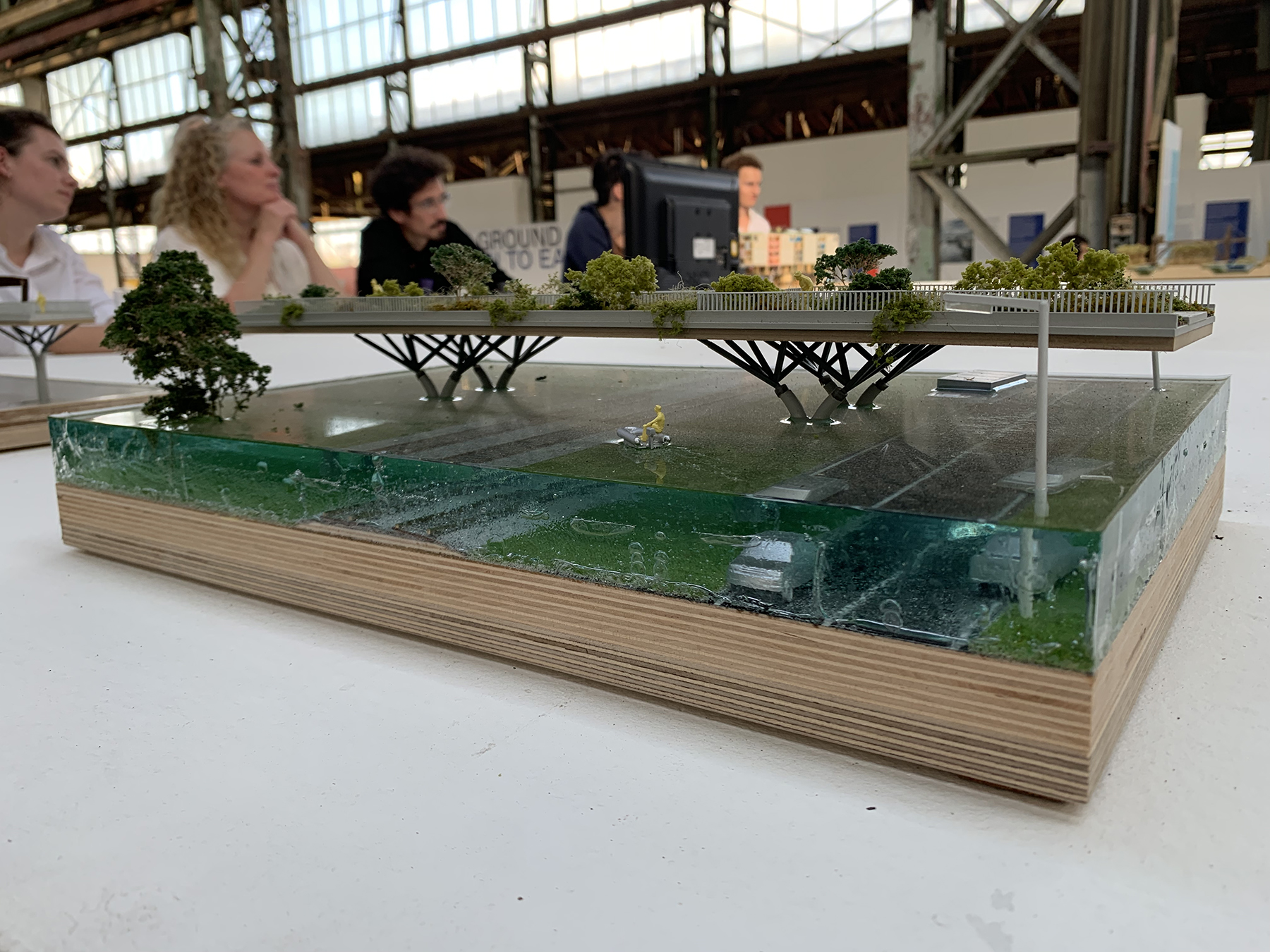
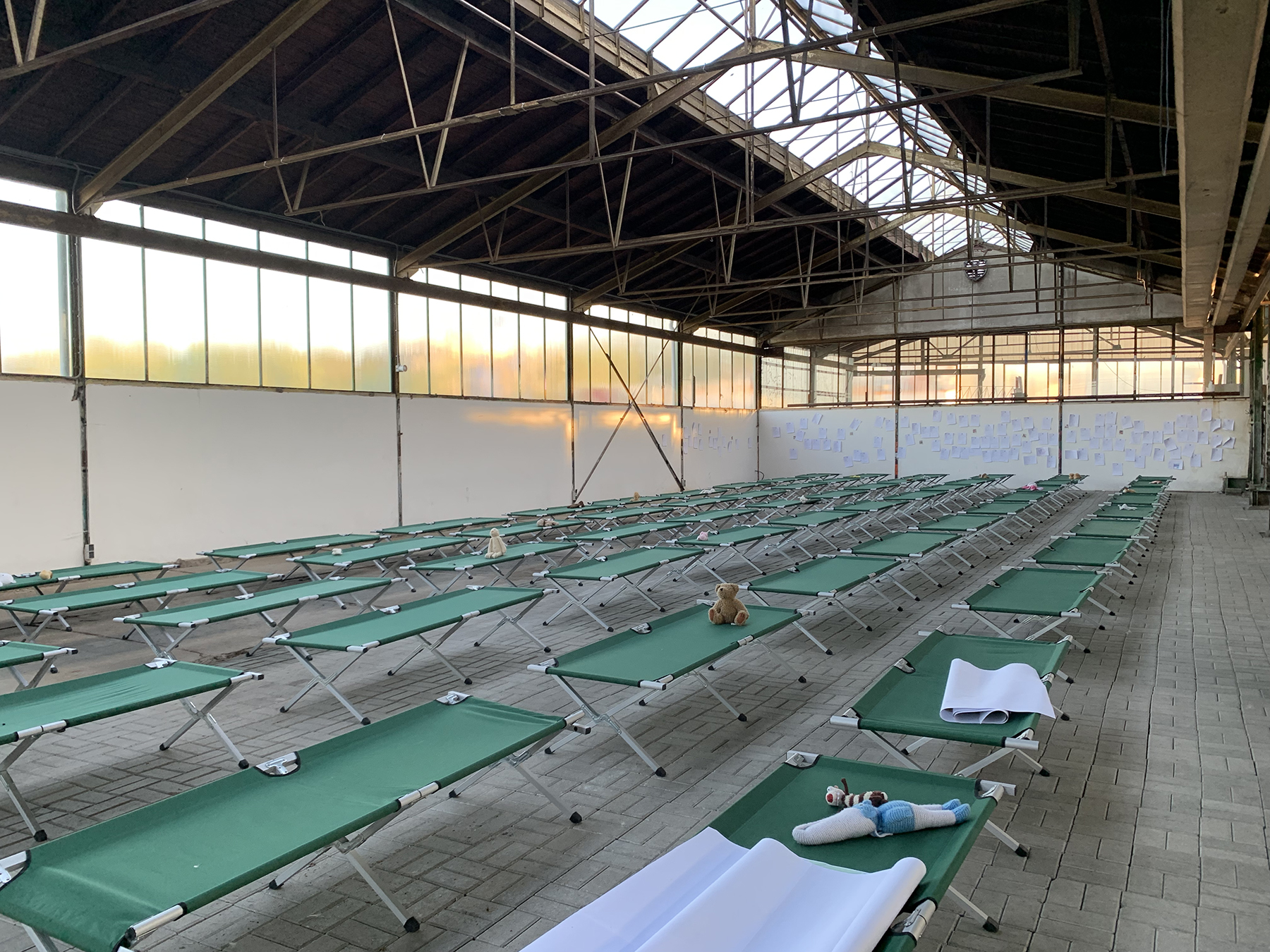
Dordrecht needs a safe place—nearby—where residents can evacuate. De Staart can function as a safe place because of its relatively high location, of an average NAP +3 meters. The municipality asked designers in the IABR-Atelier what the possibilities are with for temporarily housing 60,000 people. It turned out to be useful to also look at the housing need for Dordrecht, which asks for 10,000 new homes to be built. This is (useful) because in the current situation about 27,000 of the 60,000 people would have to take shelter in the open air on the Staart.
The parts of De Staart that are not used for industry are easily developable and offer room for experimentation and a diverse urban interpretation. However, in the current situation, De Staart is isolated and needs a quality boost. The need for a safe place in the event of a flood can therefore serve as a lever for sustainable area development, with attention to the unique location of the area and the possibilities that this offers.
The water safety as a leverage approach requires flexible space at De Staart at all times in order to be able to quickly realize the extra square meters required for peak collection during a disaster. By including space needed for the reception of evacuees and other emergency facilities in the design process, a city can be created where people not only live, but where a lot of space can also be made for recreation, education and other public facilities.






